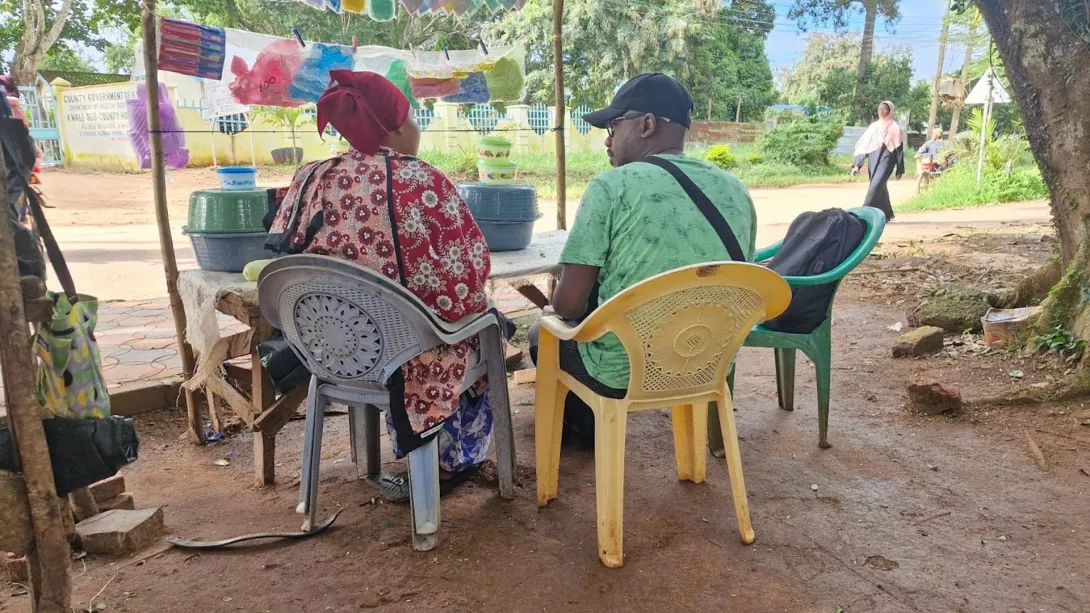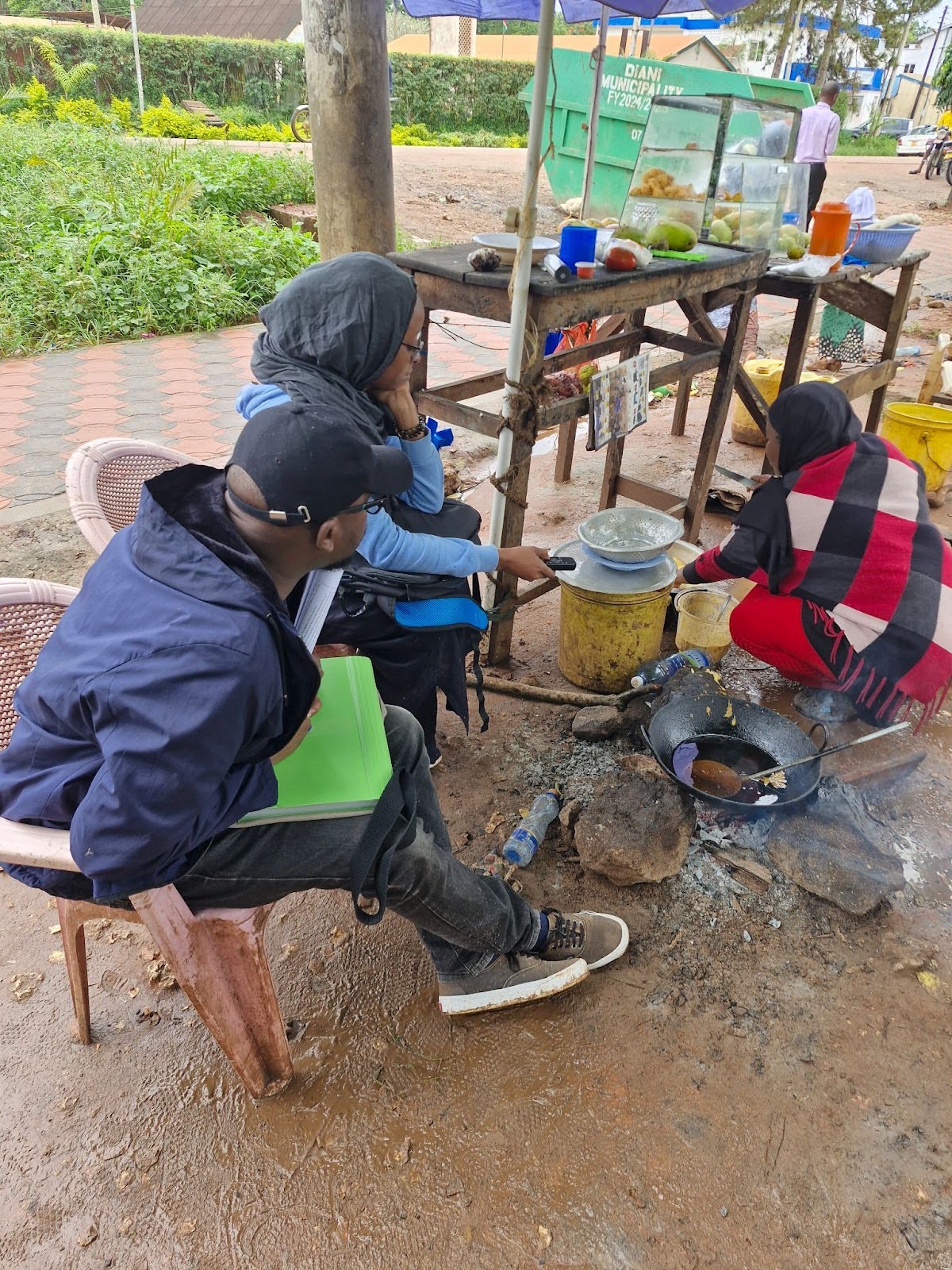
Introduction
Picture this: You're sitting in someone's living room, notebook balanced on your knees, positionning the recorder at just the right angle so that it’s not too close that it’s intrusive but also not too far that it doesn’t pick up what they are saying, trying to understand how a woman in rural Nakuru first learned to add a contact on her phone.
Instead, she takes the story in a completely different direction and shares something deeply personal about her marriage….
What do you do?

The Project Behind the Moments
This was a moment of many during the Digital Personas Project, a two-year collaboration between YUX and Quicksand, supported by the Gates Foundation.
We set out to understand how women access and use digital devices, including the contributing factors and challenges women and girls face across Nigeria, Senegal and Kenya. We also explored these topics in a larger context: how household dynamics, community influences, and personal barriers shape these experiences.
Using the Pathways segmentation, our teams talked with women and girls in urban and rural areas, doing in-depth interviews and design activities like scenario-based exercises across two rounds of research. We also talked to their "digital facilitators", those everyday family and friends who help them out with technology, whether it's fixing a problem or getting them their first device.
By July 2025, months of fieldwork had ended, but one theme kept resurfacing in our reflections: the intimacy of in-depth interviews. Those quiet, unscripted moments between questions, when the recorder was off, or a child wandered in, or someone anxiously looked at the clock, expecting her husband to arrive at any moment. Those moments often revealed deeper insights than anything in our guides.
Methodology meets Intimacy
When these women invited us into their marital homes, family compounds, and small businesses, they were doing more than participating in research. They were extending the intimacy from their daily lives.
At times, this was expressed through a smile or a nervous glance toward the stove, where she was cooking for her little ones who would soon be home from school. Other times, it was reflected in her frustrated look at her brand new phone, which she had placed on the table that morning, and had fallen into a basin of water.
As researchers, we learn to read the room, to sense when to press on and when to pause. In-depth interviews require that balance: leading and following at once, guiding the conversation while allowing participants to decide what matters most to them.
This is where the power of team research stands out. Working in pairs (in our case, we aimed for one male, one female researcher), we discovered that strong research partnerships can make or break these moments of intimacy. 
The Power of a Two-Person Research Team
In Kenya, our field teams included Melissah Weya, Francis Mwangi, Simeon Kamunde, and Sheila Zubeda. Together, they conducted 50+ interviews across three counties. Here are some key lessons that emerged from their conversations, which added depth and insight to our understanding of the participants' experiences.
- Trust that runs deeper than professional courtesy
When your research partner is mid-sentence with a participant and you sense they're heading toward sensitive territory, you need to trust their judgment completely. No second-guessing, no stepping on their toes. Just have faith that they'll handle the moment with the care it deserves, or sense something you didn’t.
“We had one session in Nakuru, where a participant we planned to interview had also invited her friend. Our protocol was to separate them to protect individual perspectives, but my partner gestured to hold off that day. Once we started chatting with both, and soon their unique dynamic revealed itself. One friend was more educated and tech-savvy, while the other could only make calls and relied heavily on her for digital navigation. But their bond ran deeper than technology — they had supported each other through broken marriages and times of uncertainty.
We had no plan or guide for that kind of dynamic; we learned that their friendship and interdependence shaped their digital lives,” says Francis - Debrief often, even when it’s uncomfortable
Not every interview turns out to be a masterclass in research collaboration. It’s essential to have frequent check-ins with your research teams to reflect on the day’s work, whether that’s in between sessions or on the way to the next one. Sometimes, sessions don’t go as well as we hope, and we should view these moments as opportunities for reflection or even as chances to adjust our approach.
“In one of the regions, we found a cluster of women living close together, which was initially exciting as it allowed us to explore communal relationships and their influence on mobile phone use. However, as the sessions went on, we sensed something was off. Participants’ responses echoed each other word for word, likely coached.
During our quick debrief, we compared notes and made the uncomfortable decision to end interviews in that locale. We thanked the participants and walked away,” says Melissah
- Utilise micro-communications and cues
Develop micro-communications that your research partner can quickly read and respond to. “Pretending the voice recorder isn't working” or “taking a strategic phone call” can signal when a participant seems uncomfortable, and one researcher should step away. A slight pause that means 'give them space,' or subtle body language changes can redirect the entire flow of conversation.
“Sometimes, depending on how the participants start the interview, I would excuse myself and step out to ‘make a phone call’, giving my colleague the space to broach certain topics that the participants might not have felt comfortable articulating in front of me as a male researcher.
This approach worked surprisingly well as my absence sometimes allowed the women to open up more freely than they might have if I had stayed in the room," says Francis - Sensitivity as a default
In gender-led studies, sensitivity should be the default setting. Working in a gender-balanced team allowed us to sense and respond to the social norms in every home we entered.
“In some interviews, women opened up more easily to me than to Melissah. At first, this surprised us and challenged our assumptions. In some households, we noticed that the wives felt more comfortable speaking when I initiated the conversation after asking for their husbands’ permission to talk to them,” says Francis
- Wild, iterative and creative solutions
Fieldwork rarely goes according to plan. Sometimes the woman you're interviewing isn't opening up. Other times, she's dealing with a morning crisis, her childcare falls through, and the kids are screaming throughout the interview. These moments require research partners to create space for creative problem-solving together. Any idea is a good idea.
"I recall during the first round of interviews in Nakuru, we spoke with a mother who brought her twin children along. They were fussy and cried for much of our conversation, which clearly made her feel a bit overwhelmed. Even though she didn’t express her discomfort, you could see her trying her best to balance attending to her kids while answering my questions. It was tough for her. I decided to give the kids my bracelets or pens to play with.
I realised that since we are talking to women with children under the age of 5, we need a distraction.
I pitched this idea to my research teammate, and in round two, we made sure to buy some little toys and carry them into the sessions, and whenever we met a fussy baby or toddler, we’d pull out the toys for the kids to play with, and that put mom at ease almost immediately,” says Melissah.
Conclusion
Months after our last interview in Kwale, we still think about the moments that mattered most.
These moments remind us that in-depth interviews are more than protocols and methodologies; they are acts of trust. Every question asked and every pause held happens within a dynamic that must feel safe, mutual, and human. And maintaining that requires a skilled partnership between researchers and teams.
Design research should be about collecting stories and earning them. And intimacy, when handled with care and supported by great research teams, is what turns those stories into insights.
About the Authors
Melissah Weya and Francis Mwangi are Design Researchers at YUX Design
